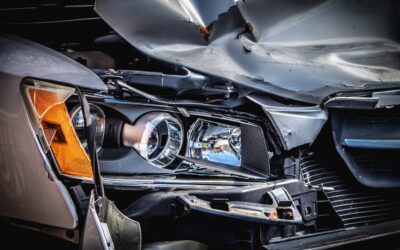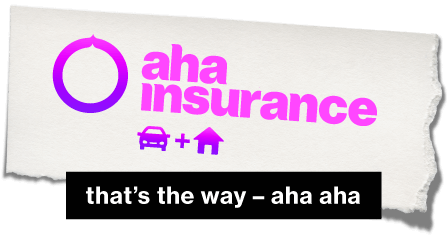Icy roads. Busy highways. Distracted drivers. Outright accidents.
These are all great reasons why you need to consider collision coverage. Your standard car insurance policy will cover you with accident benefits when you’re injured, and third-party liability insurance will cover the cost of being sued, but what about repairs to your own vehicle? Who pays that bill?
“In 2018, 67,580 vehicles in Ontario were involved in Fatal and Personal Injury Collisions.”
Based on these numbers, there were, on average, 185 accidents per day in Ontario during 2018. If you have the financial security to cover repairs and other costs out-of-pocket, it may be less of a risk for you to not have collision coverage.
For most of us, however, it’s just not a risk worth taking. Cars are just too expensive to replace with out-of-pocket funds.
What is collision coverage?
Collision coverage is a type of auto insurance that covers the cost of your repair bills if you damage your vehicle in an accident by hitting an object or another car. The amount of coverage you have will depend on the coverage limits set in your policy, but take comfort knowing that many policies with collision coverage will cover you no matter who was at fault. If you weren’t at fault, then you’d be covered under “direct compensation property damage” included in your auto policy.
What kind of objects are we talking about?
- another vehicle
- a trailer attached to another vehicle
- the surface of the ground (i.e. in a rollover)
- objects in or on the ground (i.e. hydro poll, parking lot barrier, street sign)
Remember, collision coverage is specifically for damage to your insured vehicle. If you or your passenger(s) are injured in the accident, that would be covered under the accident benefits portion of your standard auto insurance policy.
How does collision coverage work in Ontario?
Ontario requires drivers to obtain four types of auto insurance:, which count toward the 5 parts of an auto insurance policy (optional coverage being the fifth).
- Third-Party Liability Coverage
- Statutory Accident Benefits Coverage
- Uninsured Automobile Coverage
- Direct Compensation – Property Damage (DC-PD) Coverage
These are all part of any standard auto insurance policy regardless of collision coverage.
If you choose to add collision coverage to your auto insurance policy (which we highly recommend!) you’ll need to decide on two things:
- What size of deductible are you willing to pay?
- How much can you afford to pay in premiums?
How much should my deductible be?
Deductibles for collision coverage typically come in options of $500 and $1,000, but it’s possible to find higher deductibles. Your aha insurance agent can help you determine the right amount for your situation, but a few key factors to consider are:
- the age of your vehicle.
- the price of your vehicle.
- your driving experience.
- how expensive your vehicle is to repair or replace.
- occasional drivers on the vehicle with less experience and/or poor driving records.
- how much you can afford to cover out-of-pocket if necessary.
Most of those factors dictate the deductible for a “normal” policy as well—that’s how car insurance works.
What happens if you have no collision coverage?
It’s important to note that collision coverage could be mandatory if you lease or finance your vehicle.
If you choose not to buy collision coverage, you’ll have to pay for all of the repairs to your vehicle out-of-pocket (in addition to other expenses, like a rental car). That could mean spending thousands of dollars that you did not plan to spend going towards one very expensive mistake.
Sometimes it might just be a scratch in the paint that needs to be buffed out, but consider the possibilities when it comes to day-to-day damage:
- Backing into another car in a parking garage
- Losing control on an icy patch of road and running into a stop sign
- Parallel parking on the street and hitting the car behind you
- Losing your side mirror in a tight parking spot
- Backing out of your narrow driveway and hitting the neighbour’s fence
- Scraping your neighbour’s car as you pull into your shared driveway
- A brake malfunction sends you into a garage door
- Hitting a deer on a night-time drive up to your cottage
- Swerving to avoid an animal on the road and hitting a tree
- Rolling over into a ditch on a country road during a snowstorm
- Rear-ending a trailer being pulled by a truck on the highway, damaging its contents
Those scenarios can happen to even the best drivers, which is why we encourage everyone to consider the cost of paying out of pocket compared to the cost of owning collision coverage.
Do I need collision insurance?
While collision coverage is not one of the mandatory types of auto insurance in Ontario, we highly recommend that you have it for your protection and financial peace-of-mind. If you can answer “yes” to one or more of these questions, then you should give it honest consideration:
- Do you commute to work?
- Are there young, occasional drivers on your vehicle policy?
- Do you take road trips or drive to a cottage pretty regularly?
- Do you frequently drive on busy highways, like the 401?
- Do you live in an urban area prone to more accidents?
- Will you be financially stable if you need to pay for your vehicle repairs or replacement out-of-pocket?
You probably don’t need collision insurance for an old car, since its value would be so diminished, but owners of newer cars and luxury vehicles could stand to lose a lot of money without it.
What’s the difference between collision coverage and comprehensive coverage?
Collision and comprehensive coverage are both options you can add to your auto insurance policy, but what’s the difference?
Comprehensive coverage is also known as “other than collision coverage” because that’s what it covers, in a nutshell—a wide variety of known risks to your vehicle outside of events involving collisions.
Comprehensive coverage is meant for what we call “perils.” These include things like:
- fire
- theft
- falling objects
- natural disasters
- weather damage (think cracked windshield insurance claims)
Evaluate your car’s worth to help you decide if collision coverage is right for you—and our team of trained brokers are always available to walk you through the decision by weighing the pros and cons with you.
Stay safe out there, friends!






